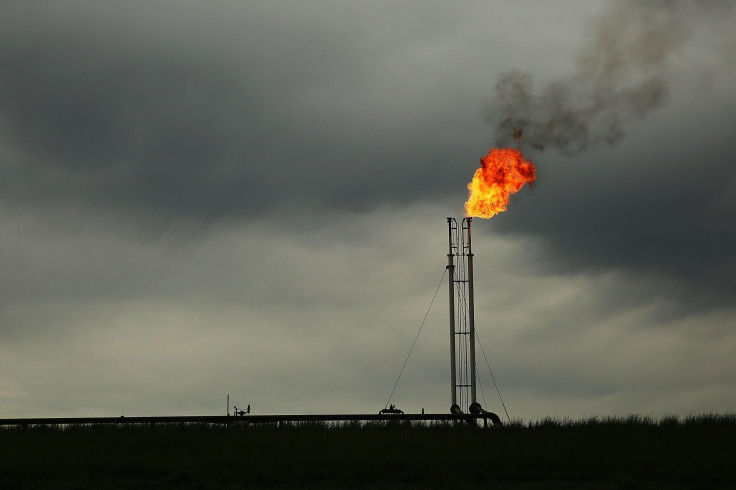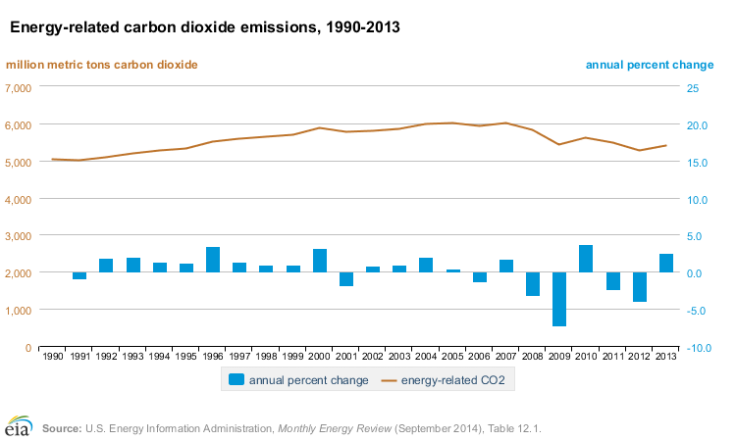Recession Drove Drop In US Emissions Between 2007 And 2013, Not Natural Gas

In 2012, carbon dioxide emissions linked to energy consumption in the United States dropped to their lowest levels since 1994, according to a U.S. Energy Information Administration (EIA) report released in 2013. This drop was largely attributed to a decline in coal use and a shift to natural gas, which emits about half as much carbon as coal.
However, a new study, published in the journal Nature Communications on Tuesday, has found that the drop in emissions was caused largely due to a reduction in consumption and economic activity triggered by the Great Recession.
“In our results, natural gas plays a bit part in decreasing emissions,” Steven Davis, assistant professor of Earth system science at the University of California, Irvine and a co-author of the study, said in a statement. “The real heroes are consuming less stuff and using energy more efficiently.”
Between 2007 and 2013, energy-related carbon dioxide emissions declined by approximately 11 percent, after a near-continuous rise since 1991. According to the latest study, economic growth fueled 71 percent of the increase in carbon emissions between 1997 and 2007. And, between 2007 and 2009 -- the period coinciding with a drastic drop in economic activity -- carbon dioxide emissions plummeted by 10 percent.

“[Between 2007 and 2009] there were changes in how much Americans consumed, what types of products they consumed, the balance of manufacturing and service industries, and the quantity of energy used per dollar of products produced,” the authors of the study said in the statement.
More than 80 percent of the decrease in carbon emissions was found to be because of the decline in economic activity. The remaining 17 percent was the result of a shift in energy sources.
Since 2012, as the economy began recovering, carbon dioxide emissions have also risen. In 2013, for instance, carbon dioxide emissions increased by 2.5 percent over the 2012 levels.
“Moreover, carbon dioxide emissions are not the only consideration; a growing number of studies show that increased leakage of methane from new natural gas infrastructure can offset carbon dioxide reductions relative to coal,” the study found.
According to a study published last year, natural gas drilling and fracking might be emitting up to 1,000 times the methane -- a more potent greenhouse gas than carbon dioxide -- than previously thought.
Additionally, the study found that a domestic reduction in carbon dioxide emissions from coal was being offset by an increase in U.S. coal exports to overseas markets -- thereby increasing the overall global carbon dioxide levels. In such markets, less efficient power plants might, in fact, be burning more coal and producing less energy per unit of carbon dioxide emission.
“The U.S. power sector consumed 170 million fewer metric tons of coal in 2013 than in 2007, during which period coal exports doubled even as coal prices rose. … Although carbon dioxide emissions from U.S. coal burned elsewhere are generally attributed to the country where those emissions occur, the emissions nonetheless contribute to global climate change,” the authors said.
© Copyright IBTimes 2025. All rights reserved.






















